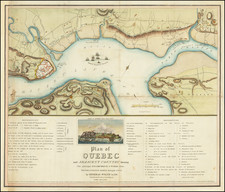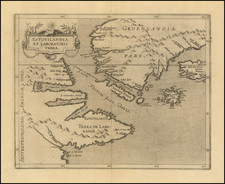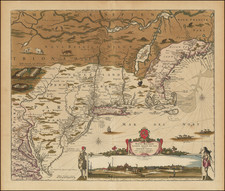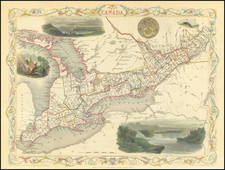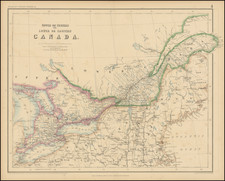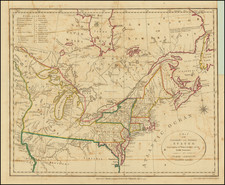"Canada or New France," a 1679 map by John Seller, renders a vivid picture of the territories of early North America. Published in London, this piece stands out for its reference to all significant contemporary English colonies and offers a valuable insight into the territorial understanding of the period.
Seller's map emerges in the wake of the turbulent 17th century, a time defined by rivalries among European powers for control over the New World. The map’s annotations present a catalog of contested regions, offering a glimpse into the geopolitical landscape. From "Eftotiland or Terra de Labrador" to "New Swedland," the named territories echo the transatlantic ambitions and rivalries of the period.
An accompanying engraved plate provides further detail about the territories and peoples in New France, offering a list of six main areas and notable indigenous populations, including Algonquins, Iroquois, and Hurons. The inclusion of such ethnographic information underscores the complexity of this historical moment, capturing the intersection of different cultures and political interests in the formation of the New World. The document, as a whole, exemplifies the richness of early cartographic representations of North America.
Quite rare on the market. OldMaps.com lists a single example for sale in 2004.
John Seller was one of the most notable map and instrument makers in England in the late-seventeenth century. He was especially known for the sea charts, many of which featured in his influential English Pilot and Atlas Maritimus. Seller was born in London in 1632. His father was a cordwainer and John was apprenticed to Edward Lowe, of the Merchant Taylors’ Company. He was made free of that company in 1654. Later, he also was made a brother of the Clockmakers’ Company, which housed several instrument makers. He started business as a compass maker but expanded his offering to include navigational instruments and charts.
Seller’s career was halted temporarily, and fantastically, when he was tried for high treason in 1662. He was accused of involvement in a plot led by Thomas Tonge. While Seller likely only unwisely repeated rumors, he was convicted. The other conspirators, who did admit some degree of guilt, were executed, but Seller maintained his innocence and, via insistent petitions, he eventually secured his release from Newgate Prison.
This episode did not seem to slow Seller’s rise too much, however. Seller was granted a royal license to publish English-language maritime atlases. This gave him a near-monopoly and led to his being named hydrographer to the King in 1671. Although the point of the project was to produce English charts of Dutch dominance and bias, Seller ended up using many Dutch plates as his base material. The first volume of The English Pilot was published in 1671, followed by more volumes as well as The Coating Pilot (1672) and the Atlas Maritimus (1675). Seller was commercially successful, but some of his projects required further support. The English Pilot was eventually taken over by John Thornton and William Fisher, for example, and his proposed English atlas only produced maps of six counties.
Seller’s sons, John and Jeremiah, followed in their father’s profession. Seller also apprenticed several promising young men, including Charles Price, with whom his sons partnered. Through Price, Seller can be seen as the founding figure of an important group of London mapmakers that included Price, John Senex, Emanuel Bowen, Thomas Kitchin, and Thomas Jefferys.









